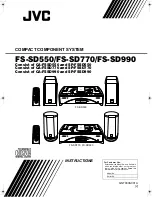
���
���
���
���
O
N
1
2
20
32
203
2
+
+
O
N
1
2
3
4
������
���
���
��� ��� ���
���
��� ��� ���
���
��� ���
1
2
Operating instructions
Startup
Safety and warning instructions
General
RF
Gate 2
➔
Installation, startup, modification and retrofitting of the system may only be carried out by an electrician.
➔
Switch off the operating voltage before working on the system.
➔
The control unit may only be used to protect against dangers at crushing and shearing points on automatic gates (designated use).
Any other use is prohibited.
➔
It is recommended to change the batteries annually.
Radio transmission system for evaluation of safety edges. The system consists of a transmitter unit and a receiver unit.
2
Electrical connection
1
Transmitter
Receiver
���
Transmitter
���
PCB Transmitter
���
Terminals
���
Battery1 CR2032
���
Battery 2 CR2032
���
LED (activation)
���
DIP - Switch
���
Push button
���
Antenna
���
Receiver
���
PCB Receiver
���
Terminals
���
LED 1 (system readiness)
���
Push button
���
DIP - Switch
���
LED 2
(Programming mode)
���
Buzzer
���
Antenna
Configuration Receiver / Transmitter
3
1. Transmitter: insert the enclosed batteries (type CR2032). Important: insert battery 1 first and then battery 2! Unless this order is observed,
correct function is not guaranteed. The batteries must be suitable for use at temperatures of -20°C and above.
2. Connect receiver to supply voltage. (Note correct polarity for DC.)
The system has no fuse protection. It is advisable to include a fuse protection of minimum 100mA and maximum 250mA into the external power.
3. Configuration Receiver / Transmitter (
➔
chapter 3)
4. Carry out programming (
➔
chapter 4).
At startup, a minimum distance of 1m must be observed between the transmitter and receiver.
Safety edges
Transmitter inputs
Receiver
Output*
(power off state)
Test
Remarks
Safety edge
8k2
Limit
switch
0 V
+ 12 / 24 V
Test
C
B
S
Output*
1
2
3
4
5
6
7
8k2
C
S
C
B
We recommend:
1. Use a cable with a diameter
between 3,5 – 7,0 mm.
2. Use a cable with 6 cores
(from 0,25 mm
2
to 0,5 mm
2
).
Receiver functions
Setting
DIP-Switch
Description
Power consumption:
“On”
1
1
3
3
2
2
4
4
ON
ON
Standard setting for safety operation
“Off”
1
1
3
3
2
2
4
4
ON
ON
Lover power consumption of transmitter
➔
For storage only! Not for safety operation!
Transmitting frequency
Frequency 1
2
2
3
3
1
1
4
4
ON
ON
Setting MUST match that of transmitter, Frequency 869,85 MHz
(if frequency 2 is disrupted externally)
Frequency 2
2
2
3
3
1
1
4
4
ON
ON
Setting MUST match that of transmitter, Frequency 868,95 MHz,
Test input
NC
3
3
1
1
2
2
4
4
ON
ON
Test contact NC, activated = contact open (npn transistor off)
NO
3
3
1
1
2
2
4
4
ON
ON
Test contact NO, activated = contact closed (npn transistor on)
Automatic
frequency adjustment
“On”
4
4
1
1
2
2
3
3
ON
ON
Automatic frequency adjustment switched on (only at very strong disrupted surroundings)
“Off”
4
4
1
1
2
2
3
3
ON
ON
Automatic frequency adjustment switched off
*
*
*
*
*
Factory settings
Standard:
with current control:
7
6
7
6
npn
open
collector
potentional free contact
or
Transmitter
Receiver (Outputs / LEDs)
Safety edge
Limit switch
LED
Output C-S
Output C-B
LED 1
LED 2
not actuated
open
OFF
closed
8k2
ON
OFF
actuated
open
flashes
open
closed
OFF
OFF
not actuated
closed
OFF
closed
8k2
ON
OFF
actuated
closed
flashes
closed
8k2
ON
OFF
Signal status
(DIP-Switch at factory settings)




















